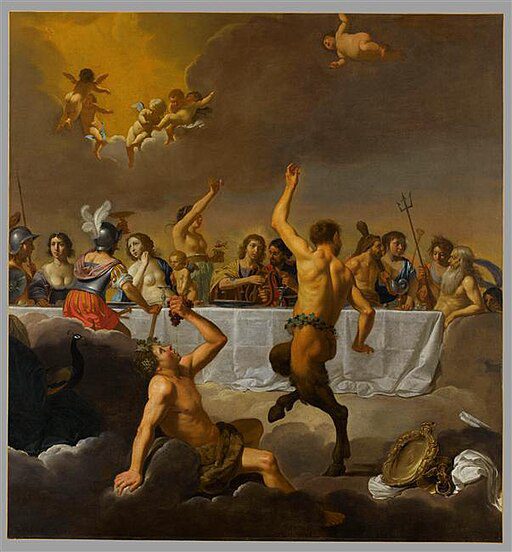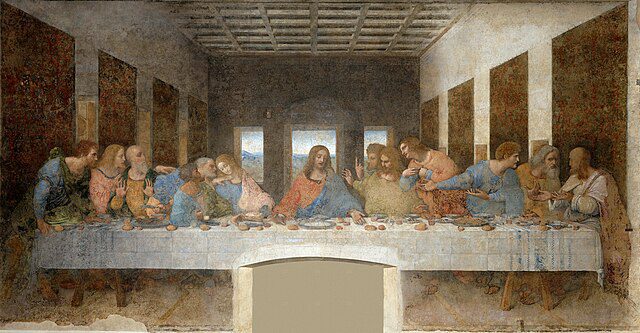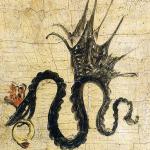Christians around the world have been offended by the opening ceremony at the Paris Olympics, which included drag queens and voguing gays in a tableau that appeared to be a mockery of Leonardo Da Vinci’s depiction of Christ at His Last Supper. The ensuing controversy illustrates the dishonesty of the cultural left.
Oh, no, said defenders of the performance, you critics are misinterpreting what was presented. This was not a parody of the Last Supper. This was not designed to mock Christianity. Rather, it was a depiction of a feast of Dionysus the god of wine and festivity. The display was referencing not Christianity but Greek mythology.
Lauren Sforza wrote an article for The Hill entitled Paris Olympics organizer says drag performance was nod to Greek mythology, not Last Supper. She describes the tableau, which floated down the Seine on a barge:
The opening ceremonies on Friday included a group of performers, some of them in drag, in a scene that some said resembled da Vinci’s painting of the Last Supper. It featured someone painted blue sitting on a table surrounded by fruit, while dancers and other performers struck poses in the background.
One of the performers in the middle was crowned with an aureole.
Sforza then quoted Thomas Jolly, the artistic director of the opening ceremony:
“There is Dionysus who arrives on this table. He is there because he is the god of celebration in Greek mythology,” Jolly said, according to NBC. “The idea was to have a pagan celebration connected to the gods of Olympus. You will never find in me a desire to mock and denigrate anyone.”
Oh, well, that would explain it, one might think. The “Olympics” goes back to the ancient Greek sporting events that honored their gods whom they believed live on Mount Olympus. The Olympics itself grows out of Greek mythology, so if that salute to paganism is innocent, surely there could be nothing wrong with a reference to that mythology.
Defenders of the “pagan celebration” at the Olympics maintained that the tableau (a “living picture,” a staging of a painting or historical events with real-life human figures) was actually a rendition not of Leonardo’s masterpiece but a different painting, The Feast of the Gods by the 17th century Dutch artist Jan Harmensz van Bijlert:

(Jan van Bijlert, CC0, via Wikimedia Commons)
But, aside from this painting looking little like the tableau unless you focus on the background, as Luther Ray Abel points out, van Bijlert was himself referencing Leonardo’s Last Supper.
Posters on social media have made the comparisons:

(Fausto Chou on X)
But there is far more definitive evidence for the queering of the Last Supper. As John Daniel Davidson points out, the title of the display was “The Last Supper on the stage on the Seine”!
In French, that is “La Cène sur la scene sur la seine.” But isn’t “cène” just the word for “supper”? Can’t that refer to a pagan supper presided over by Dionysus? No. According to the Collins French Dictionary, “la cène,” i.e., The Supper, means “Holy Communion,” and capitalized, as here, means “The Last Supper.”
We can also listen to the performers describe what they were intending to depict. Davidson quotes the activist with the halo describing the part as the “Olympic Jesus” and the tableau as depicting the “New Gay Testament.”
As for the all-but-naked blue Dionysus figure who is brought in on a platter and unveiled as the cloche is lifted, he is presented as the food for the feast. The revelers will eat this “god,” a grotesque and blasphemous twist on Christ giving us His body and blood in the Sacrament.
Read Joy Pullman’s reflection, Even When Blaspheming At The Olympics, Queer Activists Reinforce Christianity.
Illustration: “The Last Supper” by Leonardo da Vinci – Unknown source, Public Domain, https://commons.wikimedia.org/w/index.php?curid=24759




















